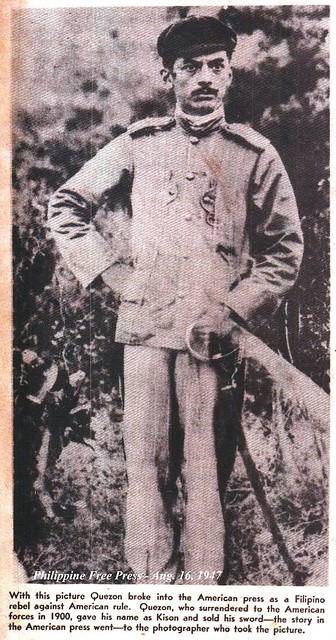 | Temple Emil, Manila, c.1940.
Whoever destroys a soul, it is considered as if he destroyed an entire world, and whoever saves a life, it is considered as if he saved an entire world
RESCUE IN THE PHILIPPINES | President Manuel L. Quezon with his First Lady Aurora and daughter Baby July 17, 1938: President Manuel L. Quezon, with his First Lady Aurora Aragon and daughter Maria Aurora “Baby” Quezon, returning to the Philippines from a trip to Japan and China. Later in the day, at Luneta, President Quezon would deliver a rousing speech that reiterated he was “ready for a showdown“—regarding his veto on the Bill of Religious Instruction; this was a speech that a newspaper would describe as “[done] to prevent any meddling in the affairs of the government.” |
| RIGHTEOUS AMONG PEOPLE AND THE HOLOCAUST |
It was during the era of the Philippine Commonwealth, 1935–1946, that Jewish refugees from Europe sought a safe haven in Manila. The migration of Jews escaping Europe between 1935 and 1941 was the last major immigration of Jews to the Philippines. The first German Jews to arrive in Manila actually came from the Jewish community in Shanghai. With the occupation of Peking by the Japanese in 1937, the four million inhabitants of Shanghai were endangered. Germany's shift of alliance from China to Japan at this time alarmed German Jews in Shanghai, fearing German pressure on Japan to adopt Nazi anti-Jewish policies. Fearing for them as well, the Jewish Community in Manila, led by the Frieder Brothers of Cincinnati,[8] organized the Jewish Refugee Committee of Manila (JRC) with the intention of rescuing German members of the Shanghai Jewish community.[9] These Jews had already been deprived of their German citizenship, and the Gestapo presence that was taking root in Japanese areas threatened Jewish existence in Shanghai as well. When the Sino-Japanese War broke out in 1937, the JRC received a telegram from Shanghai asking for assistance for Shanghai's refugee Jews. With the help of Feng-Shan Ho, the Chinese Consul-General in Austria, Austrian Jews were able to escape to other countries, including the Philippines,[10] when Adolf Hitler annexed Austria to Germany in 1938.[1] Manila then received 30 German Jewish refugee families from Shanghai, which then started a larger program that would eventually rescue 1300 refugee Jews from Europe between 1937 and 1941, the largest influx of Jews in Philippine history.
It is important to realize that the mechanics of the refugee rescue plan in Manila involved many different people and agencies in The Philippines, in the United States, and in Germany. While it was important to have the cooperation and consent of President Quezon in this refugee rescue plan, all issues of Philippine foreign affairs was still totally in the hands of the U.S. State Department and would be until The Philippines were granted their independence in 1946. What is unique to the rescue of refugee Jews in The Philippines is that the Jewish Community in Manila was granted authority by High Commissioner Paul McNutt and Philippine President Quezon to operate a selection committee to choose those who would be granted visas by the U.S. State Department.[1] By an application and review process, Jewish refugees in Germany and Austria obtained visas for immigration from U.S. consular officers who had been instructed by the U.S. State Department to issue visas based on recommendations from the JRC in Manila. This successful Frieder-McNutt selection rescue plan led to the larger resettlement rescue plan that focused on the Island of Mindanao as a destination for the mass resettlement of 10,000 refugee Jews. For the refugees who did manage to settle in the Philippines, the JRC organized committees to aid in finding employment and new homes for them in Manila. Though relatively modest in numbers when compared to the number of refugees worldwide, the newly arrived refugees nearly overwhelmed the small Jewish community of Manila, multiplying its numbers relatively overnight. An ironic turn of events occurred when all rescue plans halted with the invasion and occupation of The Philippines during WWII.
When the Philippines government honored Holocaust researcher Racelle Weiman in a public ceremony in Washington, D.C. last May, it was a culmination of sorts for Weiman, who has been working for the past 18 months to uncover the little-known rescue of Jews by the Philippines government during World War II. The Order of Lakandula, one of the Philippines' highest honors, was presented to her by visiting Secretary of Foreign Affairs Alberto Romulo at the Philippine Embassy in Washington, D.C.
Weiman heads the Center for Holocaust and Humanity Education at the Hebrew Union College-Jewish Institute of Religion in Cincinnati. During a recent visit to Jerusalem, she stressed that the Philippines rescue is a story largely overlooked and untold in the mainstream Jewish narrative. Most people do not even know there was a Jewish community in Manila, where hundreds of German and Austrian Jews found refuge in the Nazi era.
Weiman, who has a doctorate in Holocaust studies, is trying to change that.
"Some 1,200 Jews were given refuge in the Philippines, which is the same number that [Oscar] Schindler saved," she said during an interview in Jerusalem. "But for some reason, no one knows about the case of the Philippines. Everyone is familiar with the story of Shanghai, but the Philippines rescue has been overlooked."
Yad Vashem, the Holocaust Martyrs' and Heroes' Remembrance Authority in Jerusalem, has already developed its Holocaust narrative and her recent addition just "doesn't fit," Weiman says.
Weiman goes nowhere without the small, black, wheeled suitcase that is stuffed with fading photos from Manila, letters from the late 1930s detailing the rescue, transatlantic telegrams and memorabilia that could be behind glass in a museum. She and her staff are working on a documentary of the rescue, which she hopes to release by next winter.
Weiman's own connection to the Philippines began when she came across "Escape to Manila: From Nazi Tyranny to Japanese Terror," which was published two years ago. The book was written by Frank Ephraim, a German Jew who fled the Nazi regime with his family as a young boy and found refuge in the Philippine capital. Ephraim immigrated to the U.S. after the war and was a volunteer at the Holocaust Museum in Washington when he began sharing his story with the museum's curators and researchers. "Escape to Manila" was an answer to the skeptics.
At the start of the 20th century, the Frieders, a Jewish family living in Cincinnati, owned a cigar factory in Manhattan. In 1918 they decided to relocate it to Manila to reduce production costs. Brothers Alex, Philip, Herbert and Morris took turns living in Manila for two-year stints, where they rubbed elbows with the city's wealthy and powerful.
Col. Dwight Eisenhower, who would later become U.S. president; Paul McNutt, the American High Commissioner; and Manuel Quezon, the first Philippines president, were poker buddies of the Freiders'.
The Philippines was a U.S. commonwealth at the time and gained independence in 1946.
In 1938, Alex Frieder convinced his well-heeled friends to allow in a few German and Austrian refugees who were docked, without proper visas, at the port of Manila. The goal was to bring in thousands more. Within a few months, the brothers gained President Quezon's approval, while McNutt persuaded his State Department colleagues to be more flexible with visa quotas.
The Frieders then began putting Help Wanted ads in Jewish newspapers in Germany, offering refuge in Manila. To prove that the refugees would improve the local economy, the Frieders focused their efforts on professionals such as doctors and veterinarians.
They continued to advertise in German Jewish papers until 1940, but the rescue effort ended in 1941 when the Japanese attacked Pearl Harbor. After the attack and the subsequent American entry into the war, U.S. consulates in Germany - which had been issuing visas to the Jewish refugees - were shut down.
"Throughout the rescue, McNutt continued to ask his friends in the State Department to make sure that the flow of visas [to the Philippines] continued," Weiman said. "He risked his whole career to help smuggle in Jews. The Philippines government didn't demand money for taking the Jews and as far as we know there was no pay-off of officials.
"The idea was to get 10,000 refugees into the Philippines, but the rescue effort ended in 1941 and when the Japanese invaded, the Frieders had to leave Manila."
During the war, the Jewish community continued to celebrate bar mitzvahs and holidays such as Purim and Passover. Photos attesting to this, together with an original Frieder brothers cigar box, are stuffed into the rolling suitcase.
In February, the Center for Holocaust and Humanity Education hosted a reunion for those involved in the rescue to mark the 60th anniversary of the Japanese destruction of Temple Emil, Manila's only synagogue.
Nearly 100 members of the Frieder family took part, including Alice Frieder Weston who was a young girl in Manila when her father, Alex, helped mastermind the rescue. Also participating were Frank Ephraim, author of "Escape to Manila," and other refugees, as well as President Quezon's grandson, Manuel L. Quezon III, a Filipino journalist.
"The Philippines government was so grateful that we recognized them, because before this we never bothered to say thank you to the people who were so kind to us," Weiman said.
The reunion drew local, as well as national coverage, including a long account in The New York Times. Weiman says the Israeli media, which largely takes its cues from Yad Vashem, has continued to overlook the Philippines rescue.
In response to Weiman's remarks, a Yad Vashem spokesperson said that "the Holocaust is comprised of myriad details, many of which have yet to be fully explored. Yad Vashem encourages research in this and every aspect of the Shoah, but many aspects have not yet been investigated."
After liberation of the Philippines from Japanese occupation by the U.S. and Philippine Commonwealth Armed Forces, the freed internees of STIC joined with the remaining refugees in Manila to try to rebuild their devastated community. Temple Emil and Bachrach Hall had been totally destroyed.[2][11] All had been victimized by the Japanese occupying forces, which resulted in the death of 70 members of the Jewish community. The American military took steps to assist the Jewish community in its recovery. U.S. and Filipino soldiers provided not only food, water, supplies, and medicine for the victims, but also donated $15,000 for the rebuilding of the synagogue.
But the destruction was so wide spread that nearly all of the refugees and their American and British benefactors left the Philippines and the community membership had decreased by 30% by the end of 1946. Fewer than 250 European Jewish refugees could be counted among the estimated 600 Jews who remained in the Philippines by the end of 1948. By 1954 the Jewish community of Manila counted a total of 302 members. Thus closed the remarkable story of how one small American community of Jews in the Far East managed to do what so many more capable nations of the world were reluctant to do—save Jewish lives. By rescuing over 1300 Jewish refugees, this American Commonwealth saved them from the fate of the six million Jews who were murdered in the Holocaust.
As of 2005, Filipino Jews numbered at the very most 500 people. Other estimates range between 100 and 500 people (0.000001% and 0.000005% of the country's total population).
As of 2011, Metro Manila has the largest Jewish community in the Philippines, which consists of roughly seventy families. The country's only synagogue, Beth Yaacov, is located in Makati City, as is the Chabad House. There are, of course, other Jews elsewhere in the country, like the Bagelboys of Subic and Angeles City[2] but these are obviously fewer and almost all transients, either diplomats or business envoys, and their existence is almost totally unknown in mainstream society. There are a few Israelis in Manila working at call centers and a few other executives. There are also a number of converts to Judaism.
|
During World War Two, many individuals from many countries risked their lives to save various minorities, especially Jews, from the horrors of the Holocaust. This list commemorates 10 of them. All these individuals were made ‘Righteous Among the Nations’ by the Israeli government in honor of what they had done. 10 Feng-Shan Ho
Ho Feng ShanFeng-Shan Ho was a Chinese diplomat who saved approximately 2,000 Jews during the early years of World War II. Ho was consul-general of the Chinese embassy in Vienna during the Austrian annexation. After the “Kristallnacht” in 1938, the situation for the almost 200,000 Austrian Jews got rapidly more difficult, but in order to leave the country they had to provide proof of emigration, usually a visa from a foreign nation or a valid boat ticket. This, however, was difficult and the Evian Conference, in 1938, where 32 countries had failed to take a stand against Nazi Germany, made this even more complicated. Acting against orders of his superior, Ho, for humanitarian reasons, started to issue visas to Shanghai. He continued to issue these visas until he was ordered to return to China in May 1940. After the war, Ho settled in San Francisco where he died in 1997. He was made ‘Righteous Among the Nations’ in 2001 for his efforts to save thousands of Austrian Jews. 9 Irena Sendler
Irena Sendler in Nurse's UniformAlthough she was a social worker, Irena Sendler frequently wore a nurse's uniform. This provided her access to children in the Warsaw Ghetto by showing her to be a caseworker to help people stricken with typhus, who the Nazis did not want to go near. Of course, the children she smuggled out of the Ghetto did not have that highly communicable disease. Irena Sendler was a Polish Catholic social worker. During World War II, she was a member of the Polish Underground and the Żegota Polish anti-Holocaust resistance in Warsaw. She helped save 2,500 Jewish children from the Warsaw Ghetto by providing them with false documents and sheltering them in individual and group children’s homes outside the ghetto. As an employee of the Social Welfare Department, she had a special permit to enter the Warsaw Ghetto, to check for signs of typhus, something the Nazis feared would spread beyond the ghetto. During these visits, she wore a Star of David as a sign of solidarity with the Jewish people and so as not to call attention to herself. She cooperated with the Children’s Section of the Municipal Administration, linked with the RGO (Central Welfare Council), a Polish relief organization tolerated under German supervision. She organized the smuggling of Jewish children from the ghetto, carrying them out in boxes, suitcases and trolleys. Under the pretext of conducting inspections of sanitary conditions during a typhoid outbreak, Sendler visited the ghetto and smuggled out babies and small children in ambulances and trams, sometimes disguising them as packages. Despite being tortured and imprisoned by the Nazis, Sendler continued to do all she could to help Jewish children in Warsaw. In 1965 she was made ‘Righteous Among the Nations’, and died in 2008. 8 Hugh O’Flaherty
Monsignor H OFlahertyMonsignor Hugh O'Flaherty was a Priest assigned to the Vatican during WWII. He lead a refugee agency based in and around Rome during the occupation by the Nazis. Thousands of allied soldiers, Jews and others fleeing the evil murdering Nazis owed their lives to M. O'Flaherty and his collegues. The book, The Scarlet Pimpernel of the Vatican (by J. P. Gallagher) relates his story. Gregory Peck assumed the role of O'Flaherty in the move "The Scarlet and the Black." Definitely watch the movie -the book is hard to find. Hugh O’Flaherty was an Irish Catholic priest who saved about 4,000 Allied soldiers and Jews in Rome during World War II. O’Flaherty used his status as a priest and his protection by the Vatican to conceal 4000 escapees – Allied soldiers and Jews – in flats, farms and convents. Despite the Nazis desperately wanting to stop his actions, his protection by the Vatican prevented them officially arresting him. He survived an assassination attempt and, along with the Catholic Church, saved the majority of Jews in Rome. He died in 1963. 7 Giorgio Perlasca
Giorgio Perlasca was an Italian who helped save thousands of Hungarian Jews from the Holocaust by issuing them fake passports to travel to neutral countries. Despite fighting alongside Franco in the Spanish Civil War, Perlasca became disillusioned with Fascism and escaped from Italy to the Spanish embassy in Budapest in 1944, where he became a Spanish citizen on account of his war experience. While there he worked with Spanish diplomat Angel Sanz Briz in creating fake passports to smuggle Jews out of the country. When Sanz Briz was removed from his post, Perlasca pretended to be his substitute so that he could continue printing false passports. He also personally sheltered thousands of Hungarian Jews while they were waiting for their passports. It is estimated he saved over 5,000 Jews from the Holocaust. After the war, he returned to Italy where he lived in obscurity until he was contacted in 1987 by a group of Hungarian Jews he had rescued, and his remarkable story became public. He died in 1992. 6 Chiune Sugihara
Kaunas Kovno Lithuania Chuine Sugihara - Yad Vashem Holocaust scan3496Chiune Sugihara - Counsul of Japan in Lithuania - he worked in Kaunas/Kovno during 1939-40. His altruistic activity in the beginning of WW2 along with his wife (both risked and lost their careers in Japan) - handing out over 6,000 Visas to save Jews. When he was recalled they both lost their positions in the Government. He has been honored in Israel. Chiune Sugihara was a Japanese diplomat, serving as Vice Consul for the Japanese Empire in Lithuania. Soon after the occupation of Lithuania by the Soviet Union, he helped an estimated 6,000 Jews leave the country by issuing transit visas to Jewish refugees so that they could travel to Japan. Most of the Jews who escaped were refugees from Poland or residents of Lithuania. From July 31 to August 28 1940, Sugihara began to grant visas on his own initiative. Many times he ignored the requirements and arranged the Jews with a ten-day visa to transit through Japan, in direct violation of his orders. Given his inferior post and the culture of the Japanese Foreign Service bureaucracy, this was an extraordinary act of disobedience. He spoke to Soviet officials who agreed to let the Jews travel through the country via the Trans-Siberian railway at five times the standard ticket price. Sugihara continued to hand-write visas (reportedly spending 18–20 hours a day on them, producing a normal month’s worth of visas each day) until September 4, when he had to leave his post before the consulate was closed. By that time he had granted thousands of visas to Jews, many of them heads of household who could take their families with them. According to witnesses, he was still writing visas while in transit in hotel and after boarding the train, throwing visas into the crowd of desperate refugees out the train’s window even as the train pulled out. Sugihara returned to Japan where he lived in obscurity until he was made ‘Righteous Among the Nations’ by Israel in 1985. He died the following year. 5 Georg Ferdinand Duckwitz
Georg Ferdinand Duckwitz was a German member of the Nazi party who worked as a special envoy to Nazi occupied Denmark. Although Danish Jews were initially treated quite favourably by the Nazis, by 1943 it was planned that they would be rounded up and deported to concentration camps. Risking his career, Duckwitz made a secret visit to neutral Sweden where he convinced Prime Minister Per Albin Hansson to allow Danish Jewish refugees to escape to Sweden. He then went to Denmark and notified Danish politician Hans Hedtoft about the deportation. Hedtoft warned senior rabbis in the country, and in the following two months, over 6,000 Jews were ferried secretly to Sweden in boats. After his actions, Duckwitz returned to his duties as a Nazi official, refusing to reveal what he had done in case of losing his job or worse. After the war, he continued working as West Germany’s ambassador to Denmark. He died in 1973. Due to his actions, it is estimated that around 99% of Denmark’s Jews survived the Holocaust. 4 Frank Foley
Edwin and Frank FoleyFrank Foley was a British secret service agent estimated to have saved 10,000 Jews from the Holocaust. In his role as passport control officer he helped thousands of Jews escape from Nazi Germany. At the 1961 trial of former ranking Nazi Adolf Eichmann, he was described as a “Scarlet Pimpernel” for the way he risked his own life to save Jews threatened with death by the Nazis. Despite having no diplomatic immunity and being liable to arrest at any time, Foley would bend the rules when stamping passports and issuing visas, to allow Jews to escape “legally” to Britain or Palestine, which was then controlled by the British. Sometimes he went further, going into internment camps to get Jews out, hiding them in his home, and helping them get forged passports. He died in 1958. 3 Aristides de Sousa Mendes
Aristides de Sousa Mendes was a Portuguese Diplomat who ignored and defied the orders of his own government for the safety of war refugees fleeing from invading German military forces in the early years of World War II. Between the June 16 and June 23 1940, he frantically issued Portuguese visas free of charge, to over 30,000 refugees seeking to escape the Nazi terror, 12,000 of whom were Jews. De Sousa Mendes worked in the Portuguese consulate in Bordeaux, France, where despite explicit orders not to give visas to “foreigners of indefinite or contested nationality; the stateless; or Jews expelled from their countries of origin”. De Sousa Mendes sporadically began printing Portuguese visas illegally as early as 1939, but it wasn’t until mid June 1940, when Portugal’s status was expected to change from ‘neutral’ to ‘non-belligerent’ which would make Portugal more allied to Nazi Germany. Between June 16 and June 23, de Sousa Mendes began frantically issuing visas, along with his friend, the Rabbi Chaim Kruger, to refugees waiting in line. De Sousa Mendes travelled to the border town of Irun on June 23, where he personally raised the gate to allow disputed passages into Spain to occur. It was at this point that Ambassador Teotónio Pereira arrived at Irun, declared Sousa Mendes mentally incompetent and invalidated all further visas. An Associated Press story the next day reported that some 10,000 persons attempting to cross over into Spain were excluded because authorities no longer granted recognition to their visas. As de Sousa Mendes continued the flow of visas, Dictator Salazar sent a telegram on June 24 recalling him to Portugal, an order he received upon returning to Bordeaux on June 26 but followed only slowly, not arriving in Portugal until July 8. Along the way he issued Portuguese passports to refugees now trapped in occupied France, saving them by preventing their deportation to concentration camps. After the war, de Sousa Mendes lived in destitute poverty, dying in 1954. 2 Dimitar Peshev
Dimitar Peshev was the Deputy Speaker of the National Assembly of Bulgaria and Minister of Justice during World War II. He rebelled against the pro-Nazi cabinet and prevented the deportation of Bulgaria’s 48,000 Jews. Bulgaria was a strong supporter of the Holocaust, rounding up thousands of Jews in occupied Thrace and Macedonia to be deported to death camps. However, when it came to its own Jewish citizens, the government faced strong opposition from Peshev and the Bulgarian Orthodox Church. Although Peshev had been involved in various anti-Semitic legislation that had passed in Bulgaria during the early years of the War, the decision by the government to deport Bulgaria’s 48,000 Jews on March 8 1943 was too much for Peshev. After being informed of the deportation, Peshev tried several times to see Prime Minister Bogdan Filov but the prime minister refused. Next, he went to see Interior Minister Petur Gabrovski insisting that he cancel the deportations. After much persuasion, Gabrovski finally called the governor of Kyustendil and instructed him to stop preparations for the Jewish deportations. By 5:30 p.m. on March 9, the order had been cancelled. After the war, Peshev was charged with anti-Semitism and anti-Communism by the Soviet courts, and sentenced to death. However, after outcry from the Jewish community, his sentence was commuted to 15 years imprisonment, though released after just one year. His deeds went unrecognised after the war, as he lived in poverty in Bulgaria. It was not until 1973 when he was awarded the title of Righteous Among the Nations. He died the same year. 1 Raoul Wallenberg
Raoul Wallenberg was a Swedish humanitarian who worked in Budapest, Hungary during World War II to rescue Jews from the Holocaust. Between July and December of 1944 he issued fake passports and housed several thousand Jews, saving an estimated 100,000 people from the Nazis. On July 9 1944, Wallenberg travelled to Budapest as the First Secretary to the Swedish legation in Budapest. Together with fellow Swedish diplomat Per Anger he issued “protective passports” which identified the bearers as Swedish subjects awaiting repatriation and prevented their deportation. Although not legally valid, these documents looked official and were generally accepted by German and Hungarian authorities, who sometimes were also bribed. People saved by Wallenberg include biochemist Lars Ernster, who was housed in the Swedish embassy, and Tom Lantos, the only Holocaust survivor to serve in the United States House of Representatives, who lived in one of the Swedish protective houses.
Wallenberg rented thirty-two buildings in Budapest, and declared them to be extraterritorial, protected by diplomatic immunity. He put up signs such as “The Swedish Library” and “The Swedish Research Institute” on their doors and hung oversize Swedish flags on the front of the buildings to bolster the deception. The buildings eventually housed almost 10,000 people. Raoul Wallenberg was a Swedish humanitarian who worked in Budapest, Hungary during World War II to rescue Jews from the Holocaust. Between July and December of 1944 he issued fake passports and housed several thousand Jews, saving an estimated 100,000 people from the Nazis. On July 9 1944, Wallenberg travelled to Budapest as the First Secretary to the Swedish legation in Budapest. Together with fellow Swedish diplomat Per Anger he issued “protective passports” which identified the bearers as Swedish subjects awaiting repatriation and prevented their deportation. Although not legally valid, these documents looked official and were generally accepted by German and Hungarian authorities, who sometimes were also bribed. Sort by: Default list orderReverse list orderTheir top ratedTheir bottom ratedListal top ratedListal bottom ratedMost listedLeast listedFirst added to listLast added to list Rating:AllNot rated1 or greater2 or greater3 or greater4 or greater5 or greater6 or greater7 or greater8 or greater9 or greater10/10 List Type:AllOwnedWantedListedNot Listed
In 1939, Oskar Schindler set up a business in an old enamel works factory in Poland, employing Jews from the Krakow Ghetto as cheap labor. As the Nazis intensified persecution of the Jews, Schindler increasingly feared for the safety of his workers. He managed to convince the Nazis his factory and thus his Jews were vital to the German war effort and prevented their deportation to the death camps of the East.
Wilm Hosenfeld (full name: Wilhelm Adalbert Hosenfeld; 2 May 1895 in Mackenzell near Fulda, Hessen-Nassau, Germany–13 August 1952 near Stalingrad), originally a teacher, was a German Army officer who rose to the rank of captain by the end of the war. He helped to hide or rescue several Poles, including Jews, in Nazi-occupied Poland, and is perhaps most remembered for helping Polish-Jewish pianist and composer Władysław Szpilman survive hidden in the ruins of Warsaw during the last months of 1944. List of Righteous among the Nations by country Holocaust rescuers came from many different countries in the world. In the NetherlandsThe majority of Dutch were bystanders but approximately ten percent were involved in resistance activities and perhaps a fraction of one percent of those in the resistance took up the dangerous work of trying to hide or otherwise rescue Jews. Miep Gies, the woman who tried to save Anne Frank and her family, is one of the most famous because of the wide dissemination of The Diary of Anne Frank, but there were thousands of others, notably Geertruida Wijsmuller-Meijer, who saved many Jewish children, and Dutch consul in Lithuania Jan Zwartendijk, who saved some 3 000 to 6 0000 people. But also including Corrie ten Boom, industrialist Frits Philips, publisher Geert Lubberhuizen, writer Godfried Bomans, and also Hetty Voute, Gisela Wieberdink, Rut Matthijsen, Piet Meerberg, Heiltje Kooristra, and Ted Leenders, M.J.Bultena in Uithuizen who was hunted and shot to death by the Nazis after World War II was over, for helping so many, see commemorative stone on Bultenastraat Uithuizen. Books that report on these individuals include the Corrie ten Boom classic The Hiding Place, No Time for Tears, the story of Truus Wijsmuller-Meijer, The Heart Has Reasons: Holocaust Rescuers and Their Stories of Courage[3] by Mark Klempner, Rescuers: Portraits of Moral Courage in the Holocaust by Malka Drucker, Saving the Children by Dutch historian Bert Jan Flim, and Miep Gies' own book, Remembering Anne Frank. Of course, The Diary of Anne Frank also provides vivid descriptions of the efforts Miep and her husband made to try to help the Frank family survive, and keep their hiding place from being discovered by the Nazis, as well as from those Dutch who were collaborating with the Nazis. These days in Amsterdam, visitor may visit both the Anne Frank House and the Resistance Museum to learn more about efforts the Dutch made to resist the Nazis and to protect those targeted by the Nazis for destruction. In PolandMain article: Rescue of Jews by Poles during the Holocaust Until the end of Communist domination much of German-occupied Poland's Holocaust history was hidden behind the veil of the Iron Curtain. Poland was the only country where any help provided to a person of Jewish faith or origin was punishable by death, see Polish Righteous among the Nations. Yet 6,195 men and women (more than from any other country in the world) have been recognized as rescuers by Yad Vashem in Israel. Their real life stories of courage are just beginning to be told.[6] Many of the rescuers were women and children; and teenagers.[7] Poland during the Holocaust of World War II was under total enemy control, half of Poland was occupied by the Germans including General Government and Reichskomissariat; the other half by the Soviets, along with the territories of today's Belarus and Ukraine. The list of Polish citizens officially recognised as Righteous include 700 names of those who lost their lives while trying to help their Jewish neighbors.[8] There were also groups, such as the Polish Żegota organization, that took drastic and dangerous steps to rescue victims. Witold Pilecki, a member of Armia Krajowa, the Polish Home Army, organized a resistance movement in Auschwitz from 1940, and Jan Karski tried to spread word of the Holocaust. In GreeceThe Foundation for the Advancement of Sephardic Studies and Culture writes "One cannot forget the repeated initiatives of the head of the Greek Christian Orthodox Metropolitan See of Thessaloniki, Gennadios, against the deportations, and most of all, the official letter of protest signed in Athens on March 23, 1943, by Archbishop Damaskinos of the Greek Orthodox Church, along with 27 prominent leaders of cultural, academic and professional organizations. The document, written in a very sharp language, refers to unbreakable bonds between Christian Orthodox and Jews, identifying them jointly as Greeks, without differentiation. It is noteworthy that such a document is unique in the whole of occupied Europe, in character, content and purpose".[9] The 275 Jews of the island of Zakynthos, however, survived the Holocaust. When the island's mayor, Lucas Κarrer (Λουκάς Καρρέρ), was presented with the German order to hand over a list of Jews, Bishop Chrysostomos returned to the amazed Germans with a list of two names; his and the mayor's. Moreover, the Bishop wrote a letter to Hitler himself stating that the Jews of the island were under his supervision.[10] In the meantime the island's population hid every member of the Jewish community. When the island was almost levelled by the great earthquake of 1953, the first relief came from the state of Israel, with a message that read "The Jews of Zakynthos have never forgotten their Mayor or their beloved Bishop and what they did for us."[11] The Jewish community of Volos, one of the most ancient in Greece, has had fewer losses than any other Jewish community in Greece thanks to the timely and dynamic intervention and mobilization of the massive communist-leftist partizan movement of EAM-ELAS (National Liberation Front (Greece) - Greek People's Liberation Army) and the successful cooperation of the head of the Greek Christian Orthodox Metropolitan See of Demetrias Joachim and the chief rabbi of Volos Moses Pesach for the evacuation of Volos from the Jewish people, after the events in Thessaloniki (displacement of the city's Jews to concentration camps). Princess Alice of Battenberg and Greece, who was the wife of Prince Andrew of Greece and Denmark and the mother of Prince Philip, Duke of Edinburgh and mother-in-law of Queen Elizabeth II of the United Kingdom stayed in occupied by the Axis powers Athens during the Second World War, sheltering Jewish refugees, for which she is recognised as "Righteous Among the Nations" at Yad Vashem. Although the Germans and Bulgarians[12] deported a great number of Greek Jews, others were successfully hidden by their Greek neighbours. In FranceThe French town of Le Chambon-sur-Lignon sheltered several thousand Jews. The Brazilian diplomat Luis Martins de Souza Dantas illegally issued Brazilian diplomatic visas to hundreds of Jews in France during the Vichy Government, saving them from almost certain death. In BelgiumIn April 1943, members of the Belgian resistance held up the twentieth convoy train to Auschwitz, and freed 231 people. Several local governments did all they could to slow down or block the registration processes for Jews they were obliged to perform by the Nazis. Many people saved children by hiding them away in private houses and boarding schools. Of the approximately 50,000 Jews in Belgium in 1940, about 25,000 were deported—though only about 1,250 survived.Marie and Emile Taquet sheltered Jewish boys in a residential school or home. In DenmarkMain article: Rescue of the Danish Jews The Jewish community in Denmark remained relatively unaffected by Germany's occupation of Denmark on April 9, 1940. The Germans allowed the Danish government to remain in office and this cabinet rejected the notion that any "Jewish question" should exist in Denmark. No legislation was passed against Jews and the yellow badge was not introduced in Denmark. In August 1943, this situation was about to collapse as the Danish government refused to introduce the death penalty as demanded by the Germans following a series of strikes and popular protests. During these events, German diplomat Georg Ferdinand Duckwitz tipped off Danish politician Hans Hedtoft that the Danish Jews would be deported to Germany following the collapse of the Danish government. Hedtoft alerted the Danish resistance and Jewish leaders C.B. Henriques and Marcus Melchior who urged the community to go into hiding in a service on September 29, 1943. During the following two months, more than 7,500 of Denmark's 8,000 strong Jewish community were ferried to neutral Sweden hidden in fishing boats. A small number of Jews were captured by the Germans and shipped to Theresienstadt. Danish officials were able to ensure that these prisoners weren't shipped to extermination camps, and Danish Red Cross inspections and food packages ensured focus on the Danish Jews. Swedish Count Folke Bernadotte ensured their release and transport to Denmark in the final days of the war. Denmark rescued around 7,500 Jews en masse in August - October 1943. In BulgariaThe Nazi-allied government of Bulgaria, led by Bogdan Filov, did fully and actively assist in the Holocaust in the areas of Yugoslav Macedonia and Greece which it occupied. On Passover 1943 Bulgaria rounded up the great majority of Jews in its zones of Greece and Yugoslavia, transported them through Bulgaria, and handed them off to German transport to be taken to Treblinka, where almost all were killed. It did not deport its own 50,000 Jewish citizens, after yielding to pressure from the parliament deputy speaker Dimitar Peshev and the Bulgarian Orthodox Church. The Nazi-allied government of Bulgaria, led by Dobri Bozhilov, deported a higher percentage of Jews (from the areas of Greece and the Republic of Macedonia that it occupied) to holding camps in Bulgaria and then onto death camps in the north, than did German occupiers in the region.[13][14] In Bulgarian occupied Greece, the Bulgarian authorities arrested the majority of the Jewish population on Passover 1943.[15][16][17][18][19] The active participation of Bulgaria in the Holocaust however did not extend to its pre-war territory and after various protests by Archbishop Stefan of Sofia and the interference of Dimitar Peshev the planned deportation of the Bulgarian Jews (about 50 000) was stopped. In PortugalPortuguese diplomat in France, Aristides de Sousa Mendes issued 30,000 visas to Jews and other persecuted minorities, though it cost him his career in 1941, when Portuguese dictator Salazar forced him out of his job. He died in poverty in 1954. In Hungary, the diplomats Carlos de Sampayo Garrido and Alberto Teixeira Branquinho also helped many Jews escape Nazis and their Hungarian allies. In Spain In Franco's Spain, several diplomats contributed very actively to rescue Jews during the Holocaust. The two most prominent ones were Ángel Sanz Briz (the Angel of Budapest), who saved around five thousand Hungarian Jews by providing them Spanish passports, and Eduardo Propper de Callejón, who helped thousands of Jews to escape from France to Spain. Other diplomats with a relevant role were Bernardo Rolland de Miota (consul of Spain at Paris), José Rojas Moreno (Embassador at Bucharest), Miguel Ángel de Muguiro (diplomat at the Embassy in Budapest), Sebastián Romero Radigales (Consul at Athens), Julio Palencia Tubau, (diplomat at the Embassy in Sofía), Juan Schwartz Díaz-Flores (Consul at Vienna) and José Ruiz Santaella (diplomat at the Embassy in Berlin). In LithuaniaChiune Sempo Sugihara, Japanese Consul-General in Kaunas, Lithuania, 1939–1940, issued thousands of visas to Jews fleeing German-occupied Poland in defiance of explicit orders from the Japanese foreign ministry. The last foreign diplomat to leave Kaunas, Sugihara continued stamping visas from the open window of his departing train. After the war, Sugihara was fired from the Japanese foreign service, ostensibly due to downsizing. In 1985, Sugihara’s wife and son received the Righteous Among the Nations honor in Jerusalem, on behalf of the ailing Sugihara, who died in 1986. Swedish diplomat Raoul Wallenberg, the Italian Giorgio Perlasca, Chinese consul-general to Austria Ho Feng Shan, and others also saved tens of thousands of Jews with fake diplomatic passes. In AlbaniaAlbania is reputed to have hidden and saved not only all Albanian Jews, but also several hundred Jewish refugees from other countries, including Serbia, Greece, and Austria, although there are those who disagree with this.[21] In 1997, Albanian Muslim Shyqyri Myrto was honored for rescuing Jews, with the Anti-Defamation League's Courage to Care Award presented to his son, Arian Myrto.[22] In 2006, a plaque honoring the compassion and courage of Albania during the Holocaust was dedicated in Holocaust Memorial Park in Sheepshead Bay in Brooklyn, New York, with the Albanian ambassador to the United Nations in attendance:
In FinlandThe government of Finland generally refused to deport Finnish Jews to Germany. It has been said that Finnish government officials told German envoys that "Finland has no Jewish Problem". However, the Secret Police Valpo secretly slated more than 50 Jews, mostly refugees from Germany and Austria for deportation. After public protests the deportations were officially cancelled but 8 Jews were nevertheless deported in 1942. Moreover, it seems highly likely that Finland deported Soviet POWs, among them a number of Jews. The majority of Finnish Jews however, were protected by the government's collaboration with Germany. Their men joined the Finnish army and fought on the front. In ItalyThe situation in Italy was somewhat peculiar in that, notwithstanding Mussolini's proclamation against Jews, most Italians had no personal hatred against them. Liliana Picciotto, the historian of the archive of Fondazione Centro di Documentazione Ebraica Contemporanea (Foundation Center for the Contemporary Jewish Documentation) writes that of the 32.300 Jews living in Italy under German occupation, only 8,000 were arrested, whereas 23,500 escaped unharmed. She speculates that the overall percentage of Jews who survived in Italy owed this to the solidarity the persecuted found among the local population. In Fiume (northern Italy, today Croatian Rijeka), Giovanni Palatucci, after the promulgation of racial laws against Jews in 1938 and at the beginning of war in 1940, as chief of the Foreigners' Office, forged documents and visas to Jews threatened by deportation. He managed to destroy all documented records of the some 5,000 Jewish refugees living in Fiume, issuing them false papers and providing them with funds. Palatucci then sent the refugees to a large internment camp in southern Italy protected by his uncle, Giuseppe Maria Palatucci, the Catholic Bishop of Campagna. Following the 1943 capitulation of Italy, Fiume was occupied by Nazis. Palatucci remained as head of the police administration without real powers. He continued to clandestinely help Jews and maintain contact with the Resistance, until his activities were discovered by the Gestapo. The Swiss Consul to Trieste, a close friend of his, offered him a safe pass to Switzerland, but Giovanni Palatucci sent his young Jewish fiancée instead. Palatucci was arrested on September 13, 1944. He was condemned to death, but the sentence was later commuted to deportation to Dachau, where he died. Two other Italians distinguished themselves for aiding Jews, though outside of Italy: Giorgio Perlasca, who under the guises of Spanish ambassador in Budapest, was able to put under his protection thousands of Jews and non-Jews destined to concentration camps; and Angelo Giuseppe Roncalli, future Pope John XXIII, assisted many Jews and non-Jews to escape by issuing "transit visas" from the Apostolic Delegation in Istanbul, Turkey, in 1944. In Rome, some 4,000 Italian Jews and prisoners of war avoided deportation, many of them hidden in safe houses or evacuated from Italy by a resistance group organized by an Irish priest, Hugh O'Flaherty. Once a Vatican ambassador to Egypt, Haiti, Santo Domingo and Czechoslovakia, Fr. O'Flaherty used his political connections to help secure sanctuary for dispossessed Jews.[24] Delia Murphy, wife of the Irish ambassador, assisted him. While Vatican was on decent terms with Mussolini and the Pope disliked leftists Pope Pius XII allowed church efforts to use churches and resources to smuggle Jews out. Many priests, including a future Cardinal and future Archbishops, participated. The Vatican also reportedly had an ambassador persuade Franco to allow Jews to flee across the French border with Spain. On 19 July 1944 the Gestapo rounded up the nearly 2000 Jewish inhabitants of the island of Rhodes, which had been governed by Italy since 1912. Of the approximately 2,000 Rhodesli Jews who were deported to Auschwitz and elsewhere, only 104 survived. In NorwayMain article: Norwegian Righteous among the Nations In ChinaBetween 1933 and 1941, the Chinese city of Shanghai accepted unconditionally over 30,000 Jewish refugees escaping the Holocaust in Europe, a number greater than those taken in by Canada, Australia, New Zealand, South Africa and the British India combined during World War II. Japanese government ensured Jewish safety in China, Japan and Manchuria.[25] Japanese Army received Jewish refugees, General Hideki Tōjō received Jewish refugees in accordance with Japanese national policy and rejected German protest.[26] After 1941, the occupying Nazi-aligned Japanese ghettoised the Jewish refugees in Shanghai into an area known as the Shanghai ghetto. Many of the Jewish refugees in Shanghai migrated to the United States and Israel after 1948 due to the Chinese Civil War (1946–1950). Remember this lady ! Irena Sendler She had an ulterior motive. After the war, she tried to locate any parents that may have survived and tried to reunite the family. Most had been gassed. Those kids she helped got placed into foster family homes or adopted.
|
|


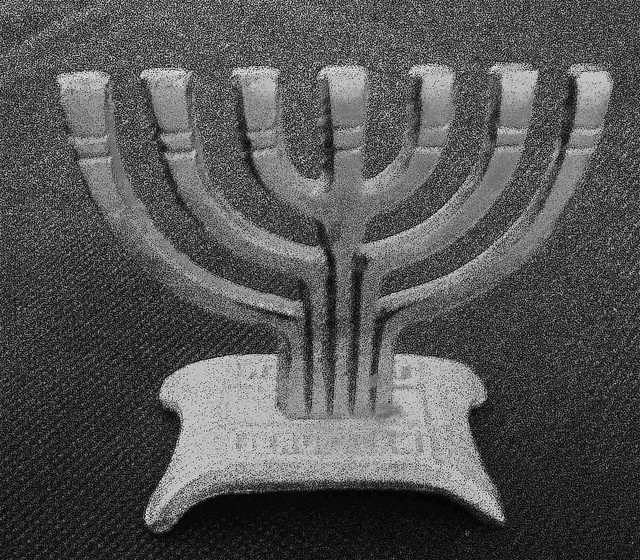

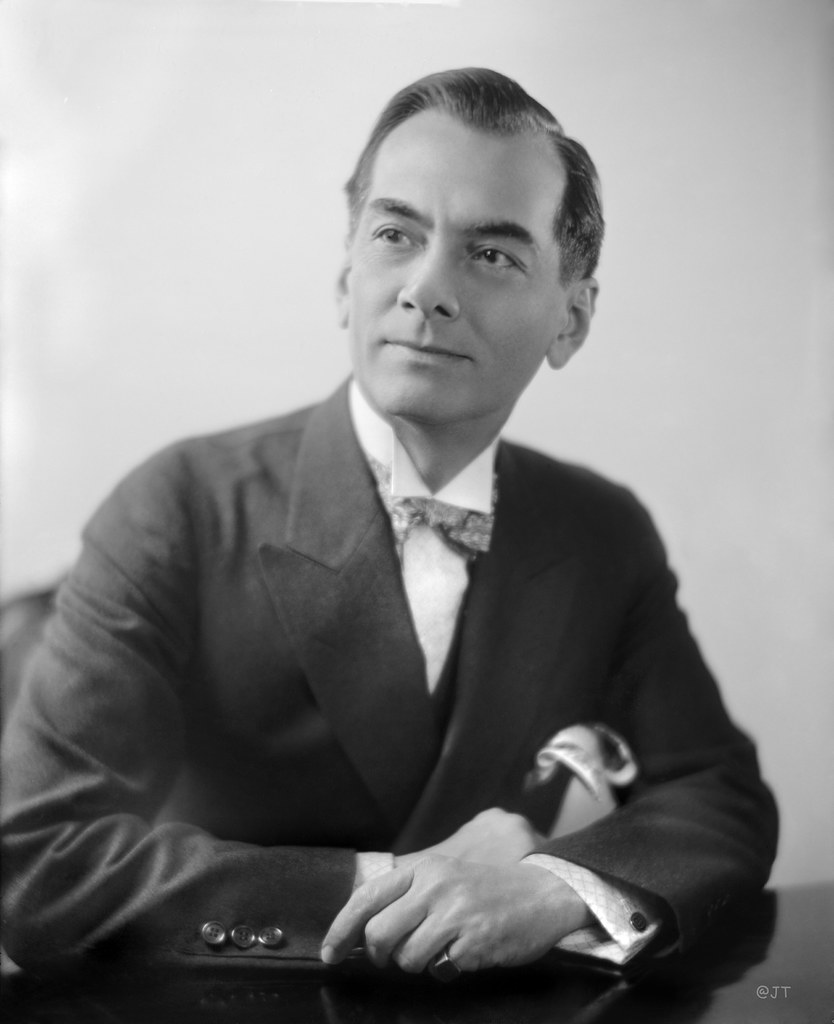 PRESIDENT MANUEL L. QUEZON
PRESIDENT MANUEL L. QUEZON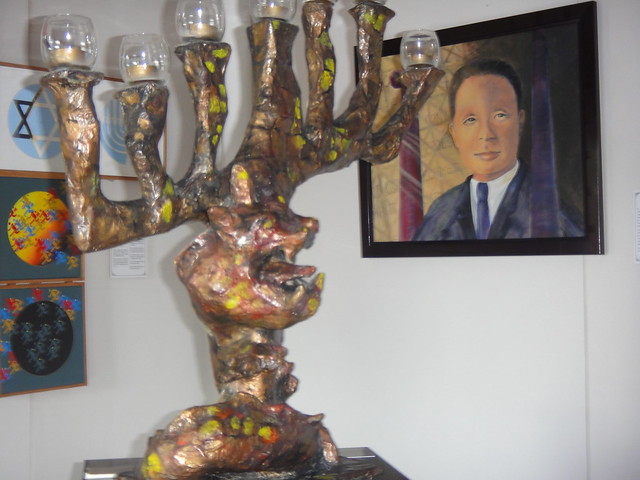

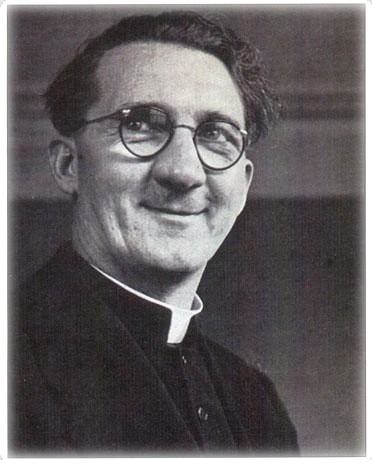
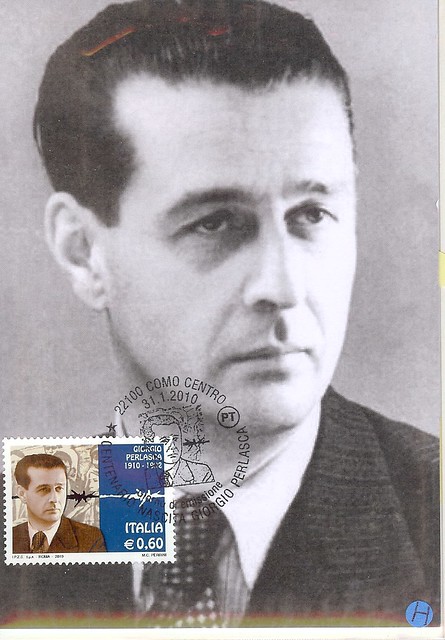
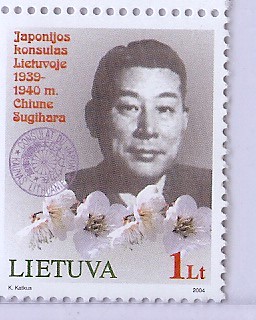

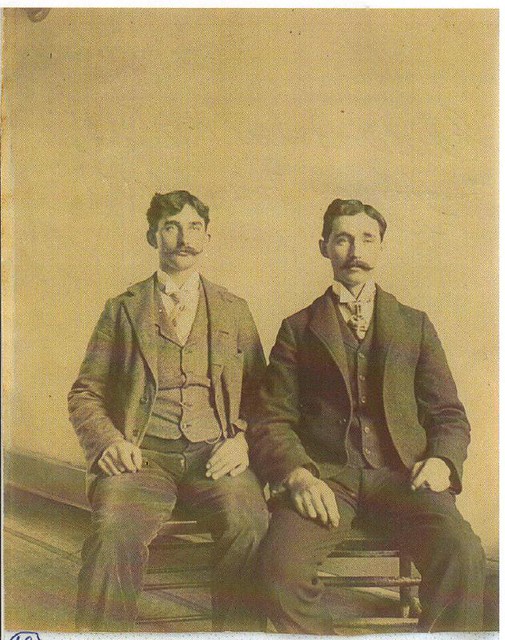
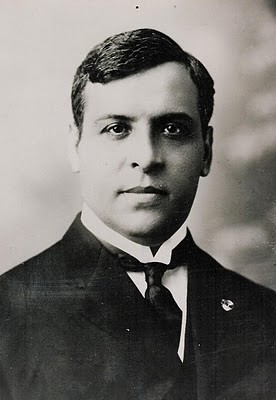
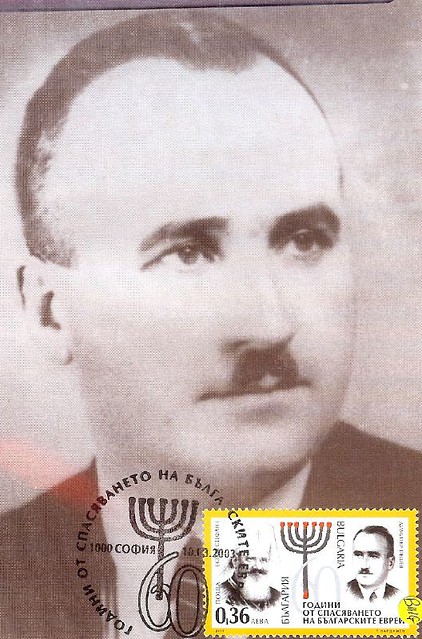
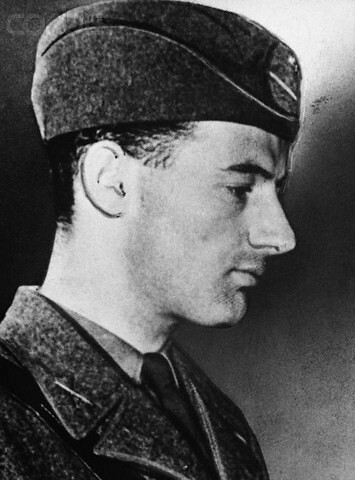





No comments:
Post a Comment